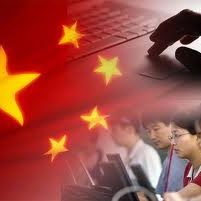China Must Work on Trust & Transparency in 2017


For China's ad tech industry, the pressing new year resolution for 2017 appears to be building trust and transparency in a market where lines between the referee and players in the game have blurred.
ExchangeWire spoke with three executives who identified key developments in the Chinese ad tech landscape last year and what they hoped to see resolved in 2017. The spokespersons are: iPinYou's CEO and co-founder Grace Huang; Taptica CEO Hagai Tal; and AppsFlyer's vice president of marketing, Ran Avrahamy.
ExchangeWire: Highlight the one development or issue that defined China's ad tech landscape in 2016.
Grace Huang: The rapid growth with mobile programmatic advertising is the biggest feature to define the ad tech industry in China. The marketers' confidence in ad tech is lowering because there are too many so-called tech companies who fail the clients. We hope to bring marketers a totally transparent system and business model, similar to the western market.
Ran Avrahamy: There was a lot of hype around DSPs in the market, starting in 2015, and really heating up in 2016, as they were deemed to be 'the solution' to address the buying needs of marketers. Unfortunately, this did not pan out and a lot of DSPs have started to fade out as big companies, such as like Tencent, Bytedance, and a few other dominant players, accumulated traffic, making it difficult for DSPs to have a real value proposition.

Grace Huang,Co-founder & CEO, iPinYou
Hagai Tal: In 2016, China's ad tech landscape was defined by content apps. The vast majority of influential app developers have shifted away from developing utility apps, like web browsers, Android launchers, and security apps, and moved towards content-based apps such as news and live broadcasting. This change in focus is allowing the country's app developers to attract more widespread interest, both serving to help them grow quickly and expand nationally.
What do you hope to see happen next year to help drive the local DSP and overall ad tech markets?
Huang: A complete transparency model to drive and build clients' confidence in programmatic buying. Also, better and mature attribution models for performance clients to evaluate the true value of programmatic buying and recognise each channel for its contribution. There is still a level of education needed in terms of how to best use programmatic to drive performance and for marketers to become more sophisticated, so they can distinguish good tech vendors from bad ones and identify real conflict of interests.
What do you hope to see develop in the market next year?
Tal: Chinese mobile app developers have set their eyes on overseas markets and continue to work to carve out their place in the international market. In 2017, the focus from developers will continue around content-related apps, as they work to drive this international expansion. China's e-commerce market also is going to continue to grow in leaps and bounds, both in terms of market growth and through enhanced personalisation that makes the shopping experience more fun.
Avrahamy: Marketers being open about working with partners in the ad tech ecosystem to achieve their goals. The industry has been tainted by lack of integrity and transparency from technology vendors. For example, you might have an attribution player that also sells data like a DMP or media such as an ad network. This means a company is playing both as the referee and player in the game when, in reality, they should be judging impartially. There is trust outside of China with global vendors taking a pure position about their business model. We hope to transfer this trust to marketers inside of China.

Hagai Tal, CEO, Taptica
Identify three priorities China marketers need to focus on for 2017.
Huang: First, focus on building knowledge in evaluating true technology capability instead of simply on price of CPC and CPM from programmatic tech vendors. Second, push for more transparency from tech partners and avoid conflict of interests. Third, understand the full user journey and build attribution model to evaluate true performance from each advertising channel.
Tal: Develop world-class apps that will help Chinese companies go global. Rely on media partners for campaign optimisations, which will ensure media transparency with regards to app quality. Focus on succeeding in the fiercely competitive domestic market.
Avrahamy: Marketers have the luxury of growing with a market that has become the economic powerhouse in the 21st century. While we don't believe funding will dry up or will be any less 'in-vogue' to invest in startups, it's time to become fiscally responsible. Marketers must be ROI-driven and use analytics platforms to empower higher level understanding of their data. We also need to stress the importance of measuring. In digital, everything is measurable and marketers have to start doing this. Finally, marketers need to embrace the position of an unbiased third-party player, rather than try to integrate with every ad network by server-to-server.
What is China's top ad tech challenge you hope will be better addressed in 2017?
Huang: Addressing the lack of industry standards. As I mentioned, it's also extremely important to enable marketers to tell good tech vendors from bad ones. Otherwise, the trust between marketers and the ad tech industry will be destroyed by suboptimal players.
Tal: The Chinese government is enforcing regulations for content providers, so app developers will need to get approval for any new content developed. This is a hurdle for a lot of Chinese companies, which they will need to address with the government.
Avrahamy: The China appstore ecosystem is highly fragmented. In order to achieve mass distribution, an app marketer would need to list in 20 to 30 different stores in order to reach about 70% market share. Store owners also are effectively responsible for promoting the apps within their stores, but are also selling media to those marketers. It's a closed loop. Whereas, outside of China, you really only have two choices: Google Play or Apple App Store. There is big potential to change this, opening up massive ad selling and optimisation. Unfortunately, it does not look like Google Play is coming anytime soon to China; but Apple's App Store is a great example of the revenue potential that consolidation can offer.
Ad FraudAdvertiserChinaMeasurementMedia SpendMobileProgrammaticPublisherTransparency








Follow ExchangeWire